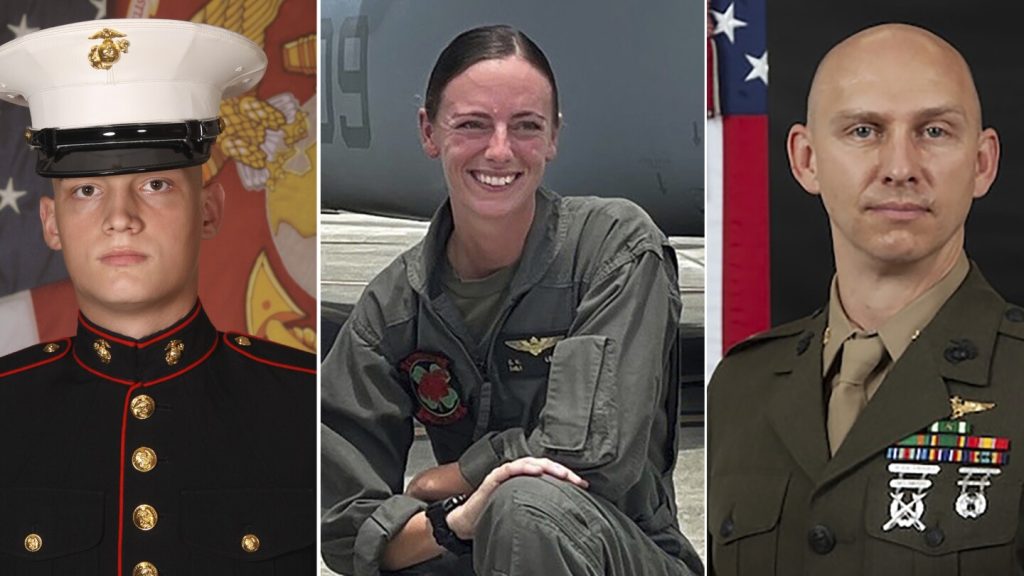An investigation into an Osprey crash in Australia that killed three Marines has revealed multiple pilot errors during a near mid-air collision. The crash, which occurred last August, resulted in the deaths of Capt. Eleanor V. LeBeau, Maj. Tobin J. Lewis, and Cpl. Spencer R. Collart. The investigation also found that squadron leadership had permitted a culture that disregarded safety of flight procedures. The 1st Marine Expeditionary Force expressed that the loss of these Marines continues to be felt across the Marine Corps, highlighting the impact of the tragedy. The crash raised concerns about the safety of the V-22 Osprey, a complex aircraft with a troubled accident history.
The investigation exposed significant safety issues within the squadron and recommended punitive actions, including potential court martial charges for a senior squadron member and potential administrative actions against the former commanding officer, Lt. Col. Joe Whitefield. A senior maintenance officer was found in violation of the Uniform Code of Military Justice for dereliction of duty in relation to the crash. Investigators also recommended a temporary pause in flight operations for all Marine Corps Osprey squadrons to review the accident and ensure safety procedures were being followed. This was the second recent Marine Corps Osprey accident in which critical flight data was lost due to post-crash fires destroying the recorder, leading to recommendations for improved recorders in the future.
The Hawaii-based squadron involved in the crash had been operating at a high pace during its overseas deployment, potentially leading to overload and safety concerns. Two prior accidents that occurred in the weeks before the fatal crash were also tied to weight and load issues, raising questions about the squadron’s safety practices. Investigators found that the former commanding officer failed to conduct a standdown after the earlier accidents, contributing to the failure to execute required safety procedures on the day of the crash. The aircraft commander for the downed Osprey did not attend mission planning briefs or review critical information before take-off, leading to a lack of awareness of the flight’s details.
Both Ospreys involved in the crash had taken on more fuel than planned and used estimates for the weight of troops on board, which impacted the aircraft’s ability to operate safely. While incomplete maintenance tasks were not identified as factors in the crash, investigators found that the aircraft should not have been certified as safe-for-flight due to the outstanding maintenance. The final moments of the flight revealed a series of errors and miscommunications between the lead and trailing Ospreys, ultimately leading to a steep bank and stalling of the trailing aircraft. The aircraft commander failed to assess the seriousness of the situation in time, resulting in the crash. Despite the tragic outcome, the 19 troops in the back of the crashed aircraft survived.
This investigation into the Osprey crash in Australia has brought to light a series of errors and safety violations within the squadron, prompting recommendations for improved safety procedures and potential disciplinary actions. The tragic loss of three Marines in the crash has raised concerns about the safety of the V-22 Osprey and the complexities of flying and maintaining such aircraft. As the Marine Corps continues to investigate the cause of the crash and implement safety measures, the impact of this tragedy on the wider military community serves as a reminder of the risks involved in military operations. As the investigation continues, the Marine Corps will likely strive to prevent similar accidents in the future and enhance safety protocols to protect service members.


